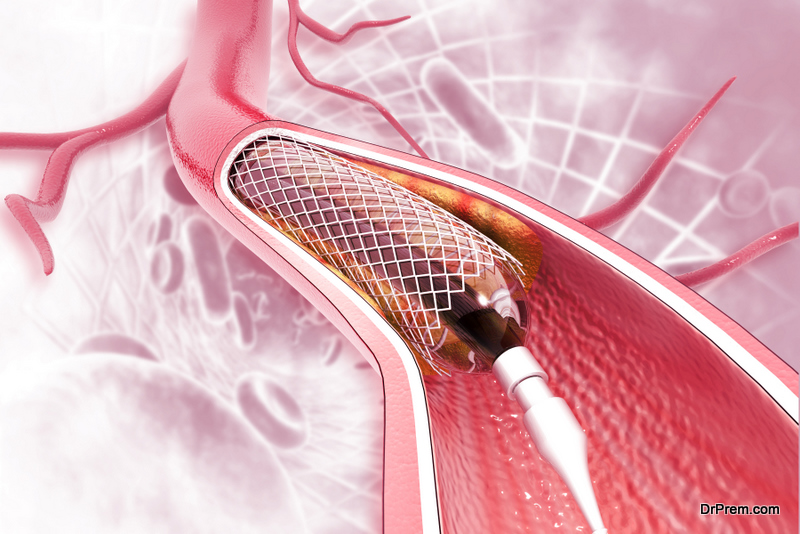Definition:
Coronary Angioplasty (AN-jee-oh-plas-tee) is a non-surgical procedure performed to open blocked or narrowed heart arteries thus improving blood flow to heart muscles. Now days, the stents (a small metal mesh tube) is placed during the angioplasty to avoid the risk of narrowing of the artery again. Two types of stents available,
1. Medicine coated known as drug-eluting stent
2. Bare-metal stent (without medicine)
Why it needed?
The procedure is advised to restore the normal blood flow in heart muscles where the coronary arteries had become narrowed or blocked due to atherosclerosis or coronary heart disease. The angioplasty is advised in conditions that includes
- Persistent chest pain and shortness of breath not relieved by medicine
- Blockage or narrowing of coronary arteries causing risk of a heart attack
Facts and figures
- The first percutaneous transluminal coronary angioplasty(PTCA) was performed in 1977
- According to AHA, more than 1 million angioplasties are performed in a year at United States
- A Swedish engineer Hans Wallsten had first developed the medical stents and were known as Wallstents than gradually shortened to stents
- Whereas, the first heart stent was invented by Charles Theodore Dotter in 1969.
- The first human coronary heart stent implantation was performed by Jacques Puel in France in 1986
Advantages
- In most cases successful procedure increases blood flow to heart muscles through the blocked artery.
- Great relief from chest pain, breathlessness, with improved quality of life as patient can participate in the activities which were restricted before.
- Decreased risk for coronary bypass surgery
- It saves life of patient in case of heart attack
- Shorter recovery time compare to coronary bypass surgery
- No need for incision
Disadvantages
- There are chances of forming blood clots within stents after the angioplasty which can cause a heart attack
- Emergency coronary artery bypass graft needs to be performed if the artery closes down instead of opening up
- About 3-5 % of people may develop heart attack
Risk and complications associated with angioplasty includes
- Allergic reaction to dye given during the angioplasty
- Bleeding from the site of catheterization
- Damage to other blood vessels
- Arrhythmia
- Kidney damage
- Allergic reaction to stent
Preoperative preparation
- Blood and urinalysis
- Diagnostic test like ECG, stress tests, coronary angiogram
- Consultation with surgeon or doctor a week ago, and have a list of medicine which is to be taken or needed to be stopped.
- Inform the surgeon about habit of smoking and alcohol. Quit smoking
- Have an arrangements with family and/or friends to help during the post-operative period
- Do not eat or drink anything after midnight the night before surgery
Postoperative care
- Generally, patient needs to stay at hospital for 1-2 days. The vital statistics will be monitored during that time
- Patient is able to walk around within 6 hours after the procedure.
Dos, Don’ts and precautions to be followed after the surgery includes
- Do keep the area where the catheter was insert dry for 1-2 days
- Take the medicines regularly as prescribed by the surgeon
- Don’t stop medication without the advice of the doctor
- Drink plenty of fluids.
- Avoid strenuous exercise and lifting heavy objects for few days after the procedure
- Quit smoking
- Have a healthy diet to lower cholesterol level
- Maintain healthy weight
- Do regular walk and exercises






